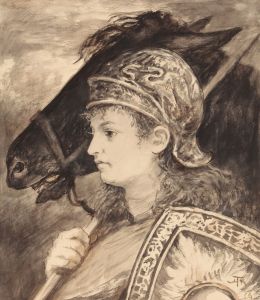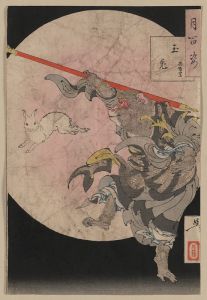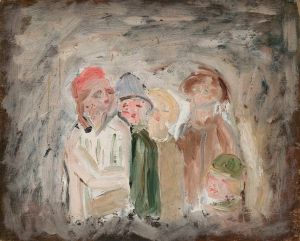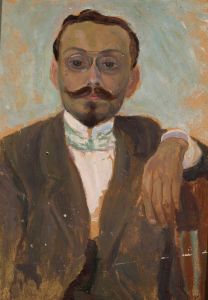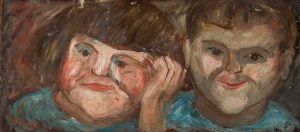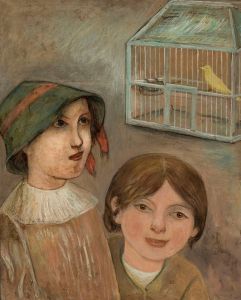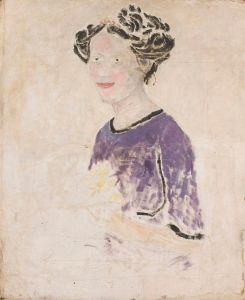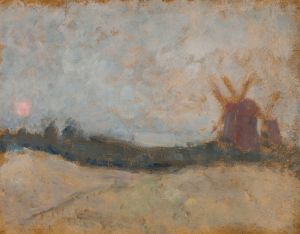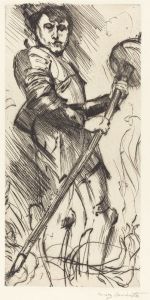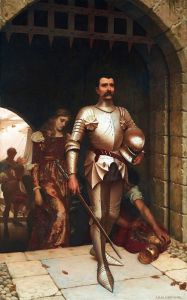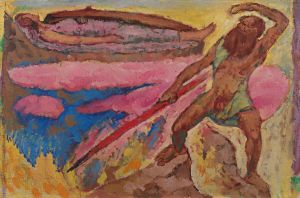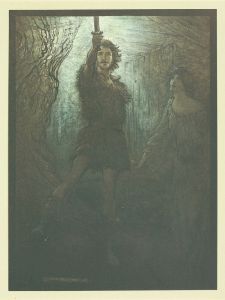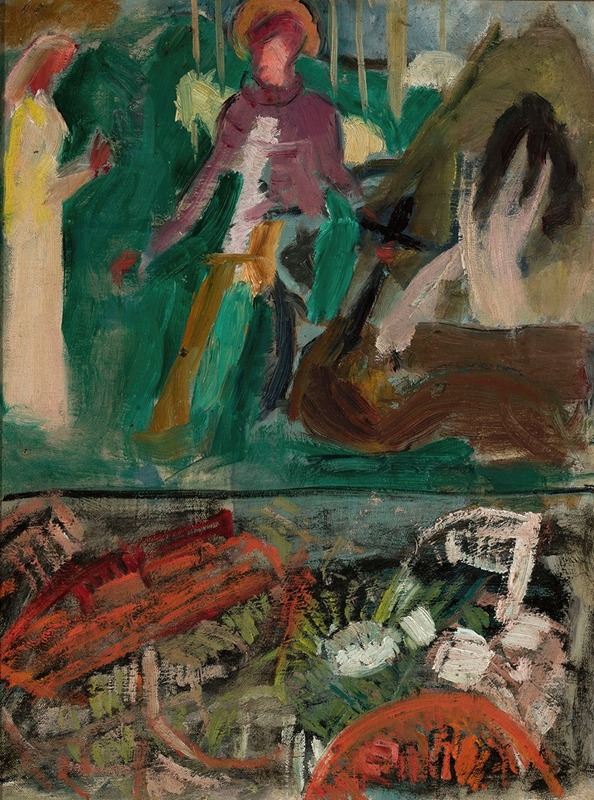
Sketch for the painting ‘Saint George piercing a dragon’
A hand-painted replica of Tadeusz Makowski’s masterpiece Sketch for the painting ‘Saint George piercing a dragon’, meticulously crafted by professional artists to capture the true essence of the original. Each piece is created with museum-quality canvas and rare mineral pigments, carefully painted by experienced artists with delicate brushstrokes and rich, layered colors to perfectly recreate the texture of the original artwork. Unlike machine-printed reproductions, this hand-painted version brings the painting to life, infused with the artist’s emotions and skill in every stroke. Whether for personal collection or home decoration, it instantly elevates the artistic atmosphere of any space.
Tadeusz Makowski (1882-1932) was a Polish painter and graphic artist known for his unique style that combined elements of Cubism and folk art. One of his notable works is the sketch for the painting "Saint George Piercing a Dragon." This sketch is an important piece within Makowski's oeuvre, reflecting his distinctive approach to both religious and mythical themes.
Makowski was born in Oświęcim, Poland, and studied at the Academy of Fine Arts in Kraków under the tutelage of Józef Mehoffer and Jan Stanisławski. His early works were influenced by the Young Poland movement, which emphasized a return to folk traditions and a focus on national identity. In 1908, Makowski moved to Paris, where he became acquainted with the avant-garde movements of the time, including Cubism. This exposure significantly influenced his artistic development.
The sketch for "Saint George Piercing a Dragon" exemplifies Makowski's integration of Cubist techniques with his own personal style. Saint George is a legendary Christian martyr and dragon-slayer, often depicted in art as a symbol of good triumphing over evil. In Makowski's sketch, the composition is likely simplified and geometric, characteristic of his work during this period. The figures of Saint George and the dragon are rendered with a sense of abstraction, yet they remain recognizable, reflecting Makowski's ability to balance modernist abstraction with narrative clarity.
Makowski's use of line and form in the sketch demonstrates his mastery of Cubist principles. The fragmented planes and faceted surfaces create a dynamic sense of movement and tension, appropriate for the dramatic subject matter. Despite the abstraction, there is a clear sense of the heroic struggle between Saint George and the dragon, a theme that resonates with the viewer on both a visual and symbolic level.
Throughout his career, Makowski maintained a deep connection to his Polish roots, often incorporating elements of Polish folk art into his work. This cultural influence can be seen in the stylized forms and decorative patterns that appear in his sketches and paintings. The sketch for "Saint George Piercing a Dragon" likely reflects this synthesis of modernist and traditional elements, creating a unique and compelling visual language.
Makowski's work, including this sketch, has been exhibited in various galleries and museums, both in Poland and internationally. His contributions to modern art have been recognized for their originality and their ability to bridge different artistic traditions. The sketch for "Saint George Piercing a Dragon" remains an important example of his innovative approach to both subject matter and technique.
In summary, Tadeusz Makowski's sketch for "Saint George Piercing a Dragon" is a significant work that showcases his distinctive blend of Cubism and folk art influences. Through his use of abstraction and geometric forms, Makowski captures the essence of the legendary battle between Saint George and the dragon, creating a piece that is both visually striking and rich in symbolic meaning.





